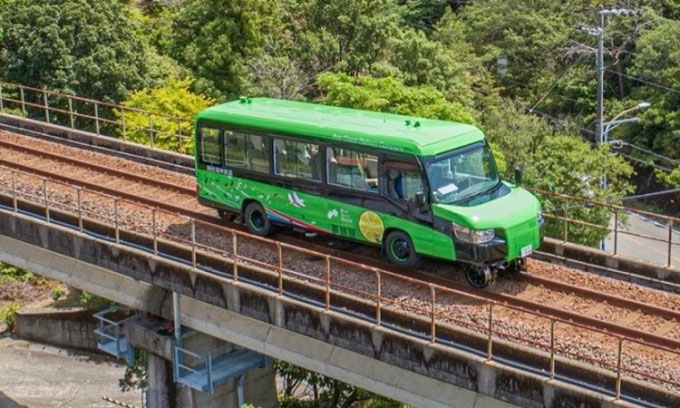The new Dual-Mode Vehicle (DMV) bus will commence operations in Japan on December 25, capable of running at 80 km/h in rail mode.
Developed since 2002, the DMV system is operated by the Asa Coastal Railway Company in Japan. The current system integrates three vehicles, capable of traveling approximately 123 km from the Awa Kainan Bunka Mura cultural facility in Tokushima Prefecture to the Umi no Eki Toromu cruise terminal in Kochi Prefecture.

The DMV bus can switch between rail and road modes in 15 seconds. (Photo: Setouchi DMO)
Each DMV is a modified diesel bus that can carry 23 passengers along with the driver. On the road, the vehicle uses tires similar to any other bus. When running on dedicated tracks, the driver simply presses a button to deploy the rail wheels from underneath the vehicle at the front and rear.
The front wheels of the vehicle are elevated above the tracks while the rear wheels remain in contact with the tracks to provide propulsion. The vehicle has a maximum speed of 80 km/h in rail mode and a cruising speed of 60 km/h. Along the coastal route, the DMV will switch modes twice. The entire mode-switching process takes only 15 seconds. For safety reasons, the vehicle does not run on existing tracks that are currently in use by trains.
According to Asa, the ability to run most of the route on rails will help the DMV consume fuel more efficiently and produce less pollution compared to conventional buses. The vehicle also requires less maintenance and can transport people during earthquakes or other natural disasters, both on highways and local roads.
The DMV will be the world’s first dual-mode bus to enter service. However, similar technology has been used in railway maintenance vehicles for decades.


















































